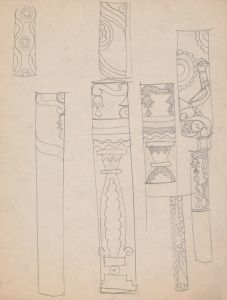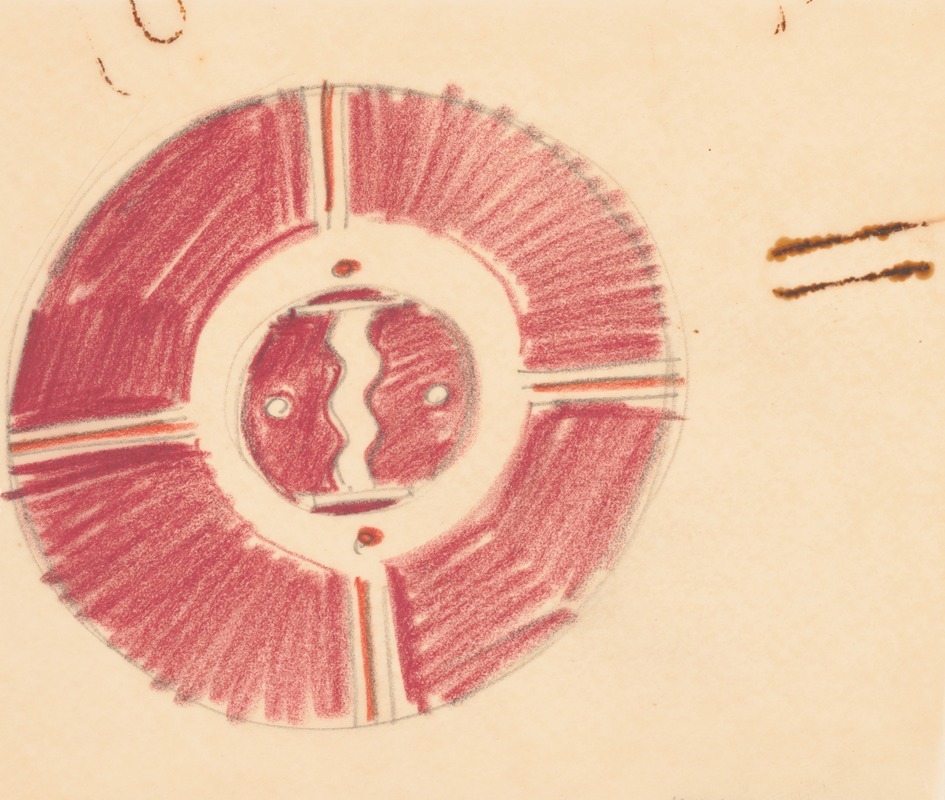
Miscellaneous small sketches for inlaid table tops.] [Design with red geometric motif
A hand-painted replica of Winold Reiss’s masterpiece Miscellaneous small sketches for inlaid table tops.] [Design with red geometric motif, meticulously crafted by professional artists to capture the true essence of the original. Each piece is created with museum-quality canvas and rare mineral pigments, carefully painted by experienced artists with delicate brushstrokes and rich, layered colors to perfectly recreate the texture of the original artwork. Unlike machine-printed reproductions, this hand-painted version brings the painting to life, infused with the artist’s emotions and skill in every stroke. Whether for personal collection or home decoration, it instantly elevates the artistic atmosphere of any space.
Winold Reiss was a German-American artist and designer known for his contributions to modernist design and his depictions of Native American subjects. Born in 1886 in Karlsruhe, Germany, Reiss immigrated to the United States in 1913, where he became a prominent figure in the American art scene. His work spanned various mediums, including painting, graphic design, and interior design, reflecting a blend of European modernism and American themes.
One of Reiss's notable contributions to design was his work on furniture and interior design, particularly his sketches for inlaid table tops. These designs often featured geometric motifs, a hallmark of the Art Deco movement, which was characterized by bold geometric patterns, vibrant colors, and a sense of luxury and modernity. The "Miscellaneous small sketches for inlaid table tops" by Reiss exemplifies his skill in integrating these elements into functional art pieces.
The specific design featuring a red geometric motif showcases Reiss's ability to create visually striking compositions that are both decorative and functional. His use of geometric shapes and bold colors reflects the influence of European modernist movements, such as the Bauhaus and De Stijl, which emphasized simplicity, abstraction, and the use of primary colors. Reiss's designs often incorporated these principles, resulting in works that were both aesthetically pleasing and innovative for their time.
Reiss's work in interior design extended beyond table tops. He was involved in designing interiors for restaurants, hotels, and other public spaces, where his distinctive style could be seen in murals, furniture, and decorative elements. His designs often included motifs inspired by Native American art, reflecting his deep appreciation and respect for indigenous cultures. This was particularly evident in his murals for the Cincinnati Union Terminal, where he depicted various Native American tribes in a series of vibrant, stylized portraits.
Throughout his career, Reiss maintained a commitment to blending art and design, creating works that were both beautiful and functional. His contributions to the field of design were recognized during his lifetime, and his work continues to be celebrated for its innovation and artistic merit.
Reiss passed away in 1953, but his legacy lives on through his art and design work, which continues to inspire artists and designers today. His ability to merge different cultural influences and artistic styles into cohesive and striking designs remains a testament to his skill and vision as an artist.





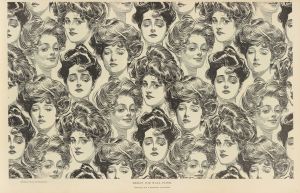
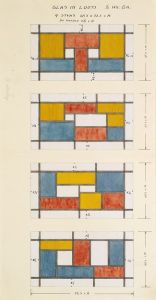
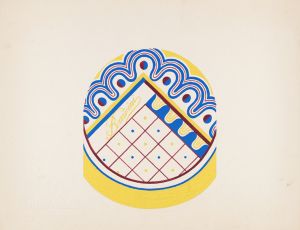
![Design drawings for miscellaneous interiors, some possibly related to the Hotel St. George, New York, NY.] [Sketch for miscellaneous interior](/imgs/249278/s/winold-reiss-design-drawings-for-miscellaneous-interiors-some-possibly-related-to-the-hotel-st-george-new-york-ny-sketch-for-miscellaneous-interior-28d93815.jpg)
![Drawings for proposed decorations of Mike Lyman’s Restaurant, 424 W. Sixth St., Los Angeles, CA.] [Drawing #7, playroom elevation L and bar elevation M](/imgs/249338/s/winold-reiss-drawings-for-proposed-decorations-of-mike-lymans-restaurant-424-w-sixth-st-los-angeles-ca-drawing-7-playroom-elevation-l-and-bar-elevation-m-f9ee50d2.jpg)
![Proposed decorations for Fisher Building, Detroit.] [Theatre foyer 109 & adjacent galleries](/imgs/249387/s/winold-reiss-proposed-decorations-for-fisher-building-detroit-theatre-foyer-109-adjacent-galleries-88035d64.jpg)
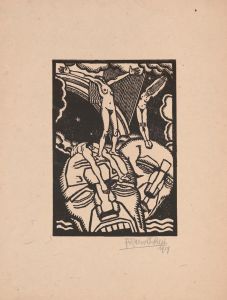
![Design for Cincinnati Union Terminal.] [Study for the color treatment of the ceiling](/imgs/249410/s/winold-reiss-design-for-cincinnati-union-terminal-study-for-the-color-treatment-of-the-ceiling-5366bd83.jpg)
![Miscellaneous small sketches for inlaid table tops.] [Design with blue circular motif](/imgs/249432/s/winold-reiss-miscellaneous-small-sketches-for-inlaid-table-tops-design-with-blue-circular-motif-ed1ccdfe.jpg)
![Miscellaneous small sketches for inlaid table tops.] [Design with circular and geometric motif](/imgs/249433/s/winold-reiss-miscellaneous-small-sketches-for-inlaid-table-tops-design-with-circular-and-geometric-motif-3afe4da6.jpg)
![Miscellaneous small sketches for inlaid table tops.] [Design with zig-zag motif](/imgs/249443/s/winold-reiss-miscellaneous-small-sketches-for-inlaid-table-tops-design-with-zigzag-motif-dbbaeb35.jpg)
